
Ten houses perched precariously on cliff edges
Living on the Edge is a book that celebrates clifftop houses. Here, author Agata Toromanoff selects 10 of her favourites, from a cabin in the Italian Alps to a villa on the Mexican Pacific coast.
Hard to access, prone to extreme weather and environmentally delicate, cliff edges are among the most difficult sites to develop.
For design historian Toromanoff, that makes clifftop architecture projects particularly fascinating.
"Architects like challenges"
"Architects like challenges and clifftop locations definitely pose an interesting one," she told Dezeen.
"The dramatic beauty of the natural plots requires equally striking design concepts and thus the power of architecture combined with today's technologies is quite appealing."
Published by Lannoo, Living on the Edge curates cliff-edge residential projects from around the world that embrace their challenging surroundings and use innovative solutions to overcome construction hurdles.
"These houses are often balancing on steep cliffs as if defying gravity, or are surrounded by nature in such a way that it becomes a part of the interiors," said Toromanoff.
"Nowadays, architects can create experiences that enhance locations in the most surprising and astonishing ways."
The book explores how the architects behind these projects have sought to execute increasingly bold ideas while limiting the impact on the landscape.
"The perfect harmony of architecture and nature, especially in unspoiled spots, is very difficult to achieve – and I don't mean only the visual aspect but mainly the intervention, which should be reduced to a minimum," added Toromanoff.
"Serious pieces of architecture"
Projects like these require clients with deep pockets, but Toromanoff believes clifftop houses are more than mere symbols of wealth.
"From the structural side, these houses are very serious pieces of architecture," she said. "Given the difficult terrain, lack of easy access, and often challenging weather conditions in these locations, the architects need to come up with truly ingenious ideas."
Read on for Toromanoff's selection and description of 10 clifftop houses. Though the book also includes unrealised concepts, these projects have all been built.
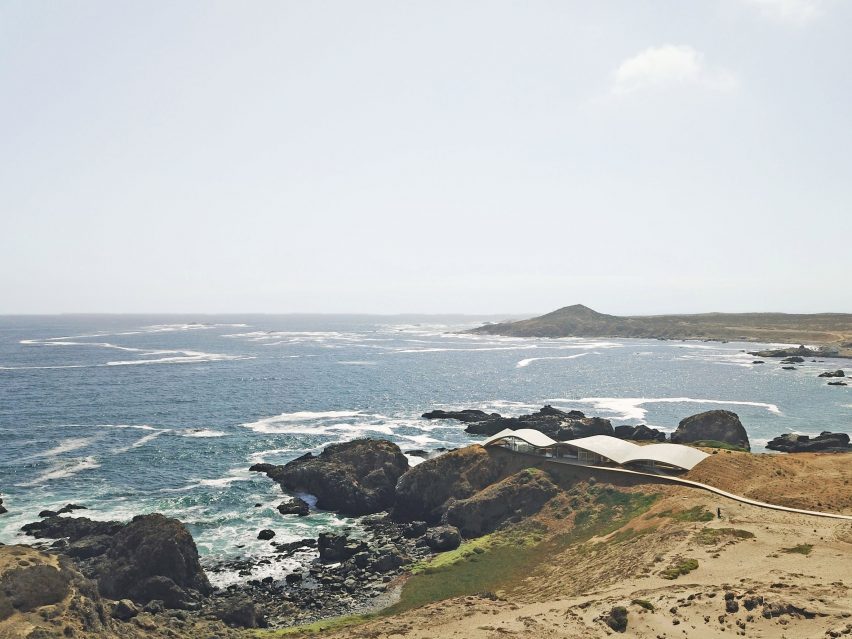
House in Los Vilos, Chile, by Ryue Nishizawa
"Although the reason for the vaulted roof was purely practical – to ensure stability and withstand strong winds coming up from the ocean – its visual resemblance to the dynamic movements of water is inescapable.
"The house is like a wave crashing over a rocky shore. Most striking, however, is not the curvaceous form but the contrast between the expansive concrete roofing and the entirely transparent glass walls that open the interiors toward the landscape in various directions."
Find out more about House in Los Vilos ›
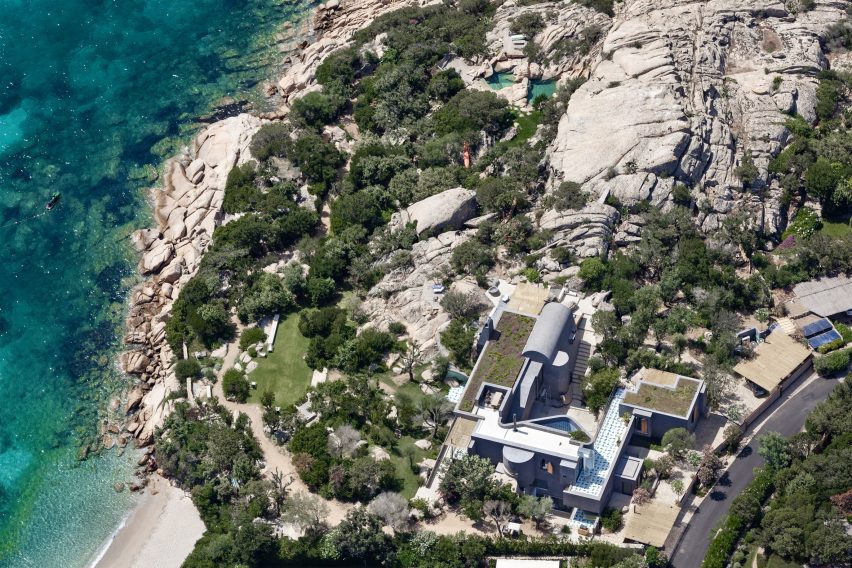
Celvia House, Italy, by Stera Architectures
"Celvia House shows a similarly interesting visual dialogue with its surroundings. The studio embedded the volumes into the rocky foundation not merely with a complex and often surprising layout, but also through the use of a melange of materials, like granite and crushed lava stone.
"In a camouflage-like manner, the architecture echoes the textural as well as formal richness of the landscape and is integrated with the plants outside in an original way."
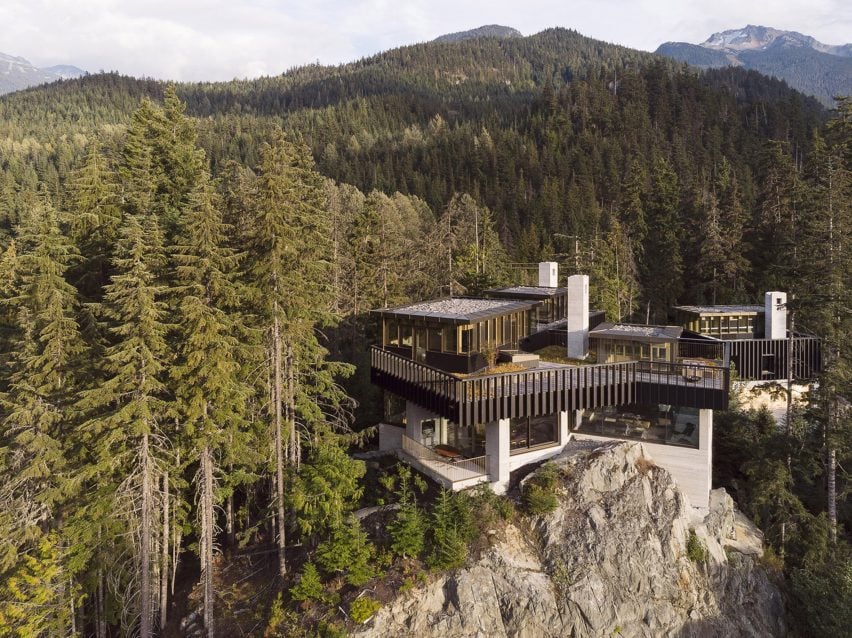
The Rock, Canada, by Gort Scott
"The Rock, located in picturesque British Columbia, is an even more extreme take on building in impossible places. The concrete base, as if an extension of the rocky foundation, carries the timber upper part, which fits visually into the surrounding woodland.
"In this multi-level volume the studio coherently embraced the uniqueness of the site, its topography, lavish fauna, weather conditions, and stunning views. A significant portion of the walls are transparent to allow the interiors to breathe in the landscape from various perspectives."
Find out more about The Rock ›
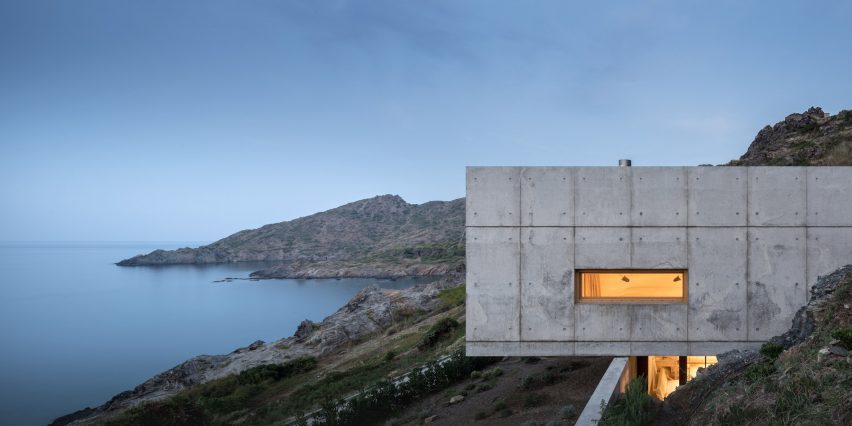
Concrete House, Spain, by Marià Castello and José Antonio Molina
"Marià Castello and José Antonio Molina demonstrate how this quintessentially modern form fits into its scenic landscape. The minimalist concrete visually fuses with the dark volcanic rocks; thus the house becomes an integral part of the environment.
"Numerous openings orient the interiors towards the sea and the immediate area of the slope, while the purity of the spaces highlights the vistas, inviting them inside.
"Designed around a series of patios, this coastal residence allows the inhabitants to enjoy outdoor life, while protecting them from the local strong winds."
Find out more about Concrete House ›
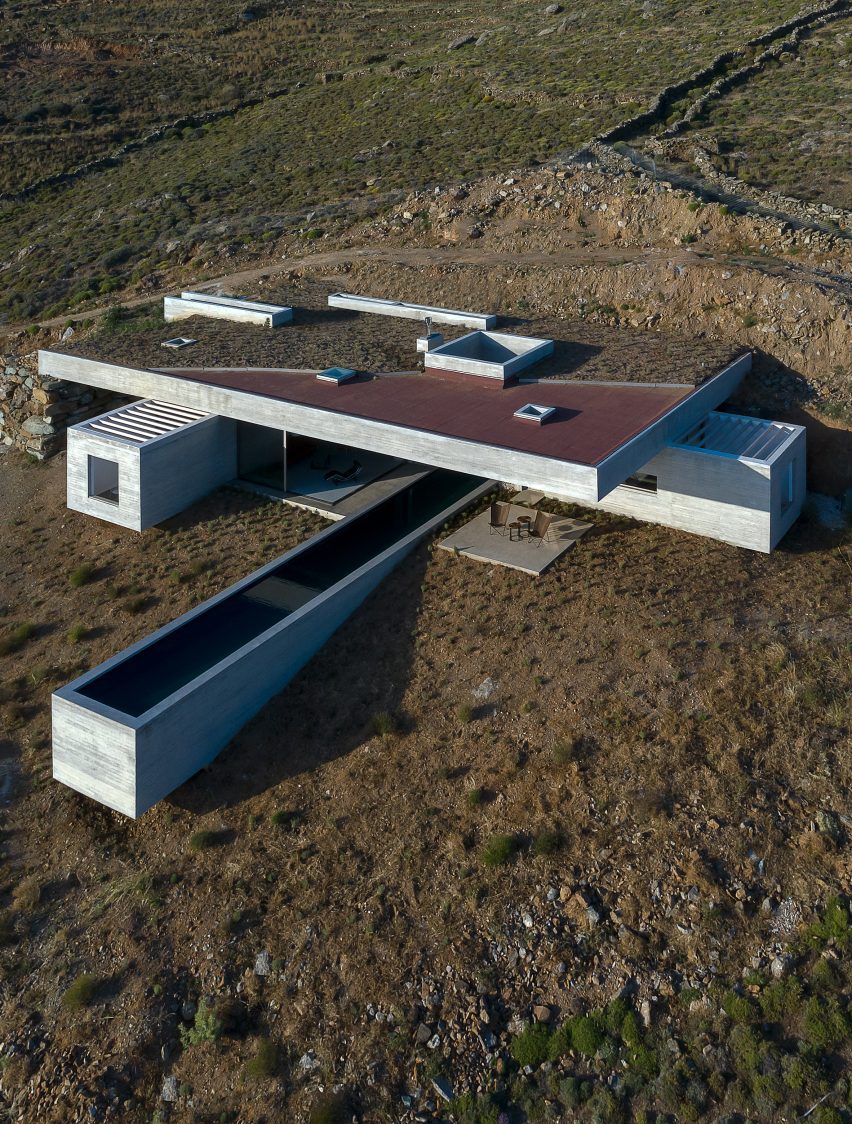
The Lap Pool House, Greece, by Aristides Dallas Architects
"The Lap Pool House, which could be easily mistaken for a fanciful, futuristic version of a building, also employs sharp lines. Dynamically merged with the slope, the geometric volumes become a seamless extension of the landscape.
"The partially camouflaged roof is not merely aesthetic but also has a functional role. Thanks to numerous apertures and openings that focus on providing a good balance of light as well as effective ventilation, it creates a residence perfectly adapted to the local weather conditions.
"The studio has also taken the concept of an infinity pool, which here emerges from the hillside, to a new level."
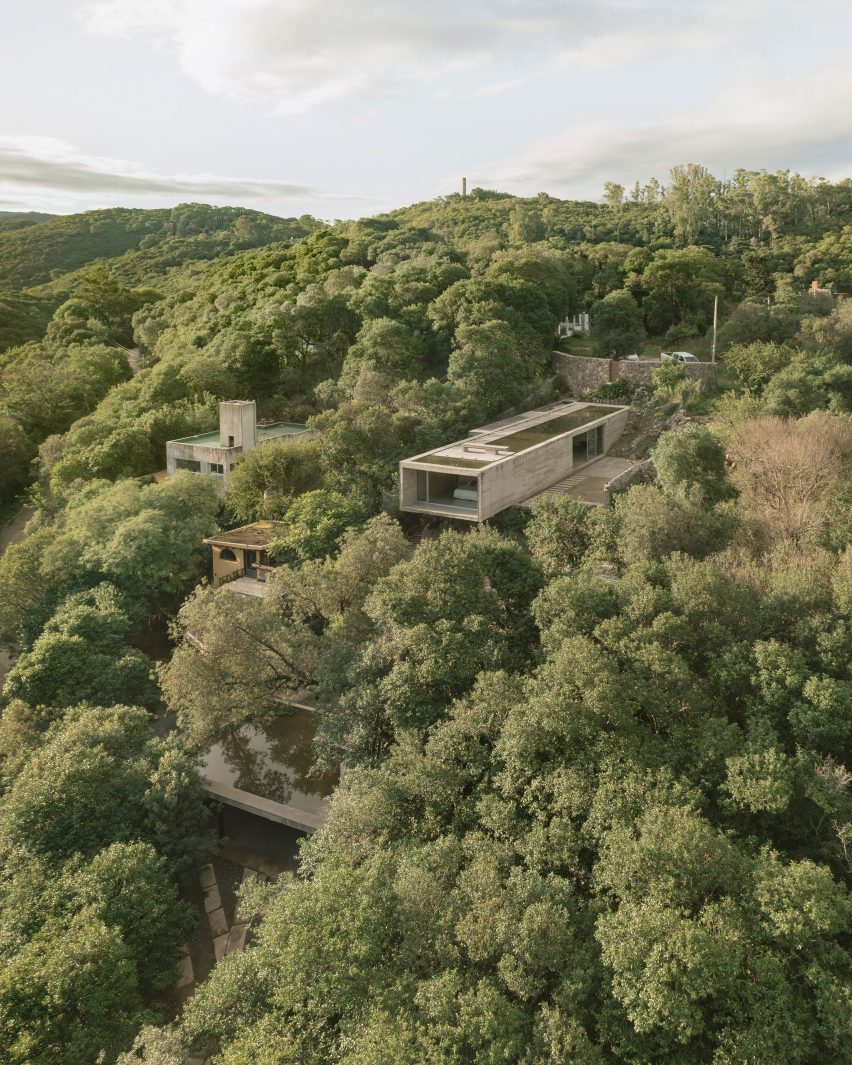
Casa 3 Elementos, Argentina, by Agustín Lozada
"Minimalist geometry also defines Casa 3 Elementos, which cantilevers over a steep plot. The lush vegetation of the rugged plot creates a hide-out environment, skilfully used by the architects.
"The tube-shaped volume reaching out into the landscape, like a telescope, is effectively finished with a full glass facade, inspiring meditative observation of the natural surroundings. The reduced palette of raw materials reinforces the camouflage effect."
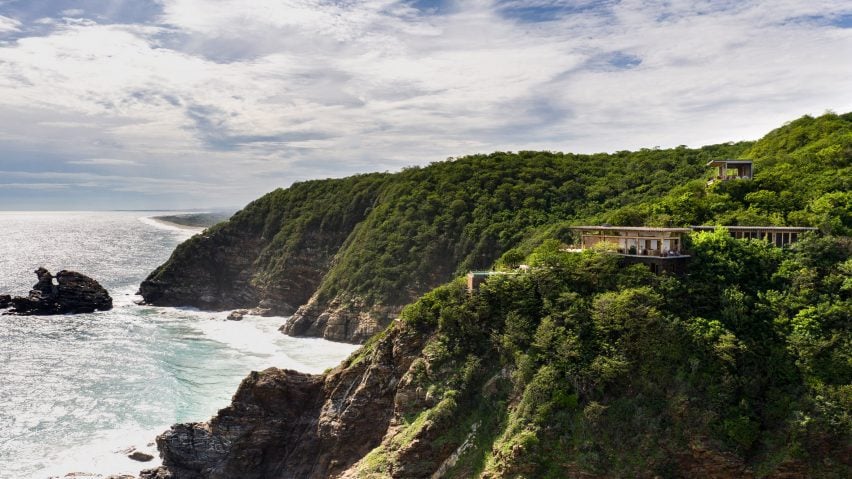
Casa en El Torón, Mexico, by Ignacio Urquiza Arquitectos
"Constructed on a steep cliff in a natural reserve of Oaxaca on the Mexican Pacific coastline, Casa en El Torón was conceived to create a close relationship between the architecture and nature.
"To preserve the lush wilderness of the place, no large machinery was used in the construction process, while most of the lush vegetation that had been growing under the house's footprint was replanted nearby.
"By choosing traditional solutions and exclusively local materials, the architects prioritised respect for natural resources, and promoted, as they say, tranquil architecture that protects the natural environment."
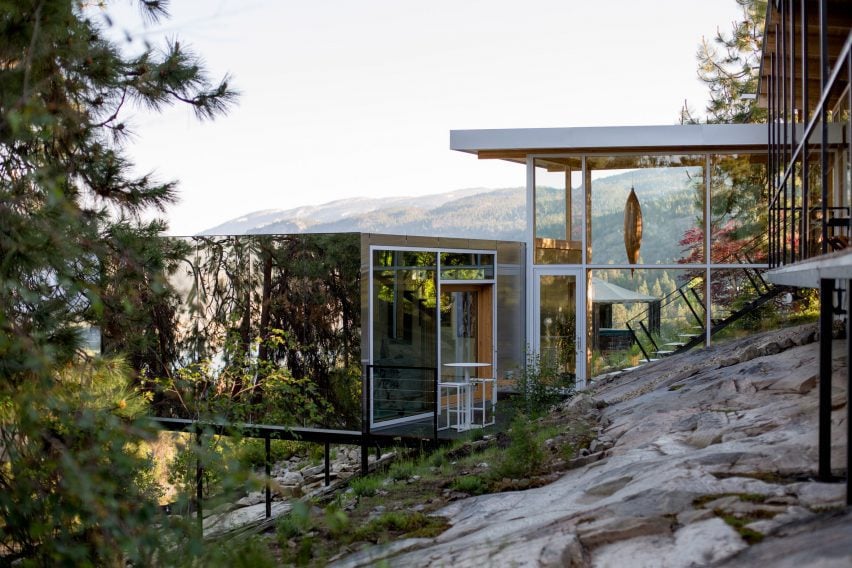
Malinka Gallery, Canada, by F2A Architecture
"The Malinka Gallery project is a great example of expansion in a most challenging location. Located on a rocky slope, the original house was built around a garden courtyard to create a good balance between the goal of opening the architecture to panoramic vistas and providing the inhabitants with enough privacy.
"While the house literally sits on the bedrock, which became a part of the interiors, the gallery volume, placed on a steel platform supported by slim posts, seems to be floating in the air. This impression is enhanced by the mainly transparent or mirror-like facade."
Find out more about Malinka Gallery ›
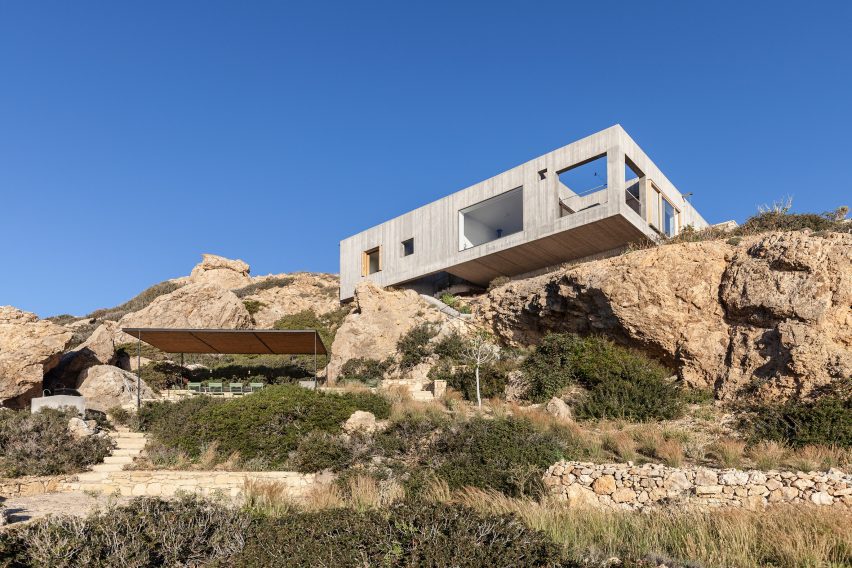
"Seeming to slide off the hill, the Patio House is visually striking thanks to its equilibristic position, balancing over the clifftop.
"The beauty of the untouched porous cliffs and bushy flora creates a truly unique atmosphere in this summer residence on the Greek island of Karpathos. The remote location and approach, and the goal of limiting alteration of the landscape to the minimum, were the main challenges for designing this minimalist yet generously sized cube.
"With a protective patio at its heart, the volume is pierced by numerous openings framing views in various directions."
Find out more about Patio House ›
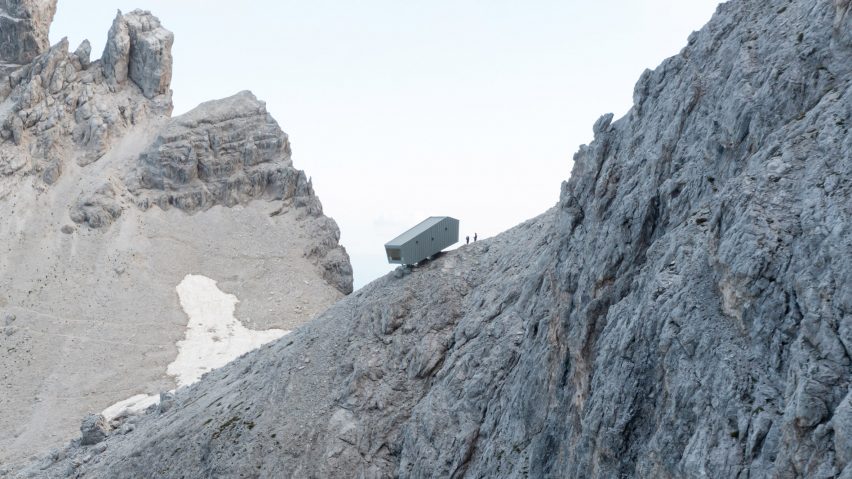
Bivouac Fanton, Italy, by Demogo
"Bivouac Fanton's shape has been inspired by nature, and its inclined profile adapts to the orography of the Marmole Arc in Italian Dolomites.
"Anchored to rugged foundations, it has a striking feature – a full-wall, panoramic window at the end of the cabin that opens the 30-square-meter interior onto vast landscape.
"The volume, made of structural fiberglass and clad with titanium zinc to resist extreme weather conditions, is quite light despite its dimensions, which played a crucial role during the transportation to this inaccessible location.
"The interiors, in natural wood, maybe don't have all the amenities of a house but offer a well-planned and minimalistic yet cosy hide-out for hikers."
Find out more about Bivouac Fanton ›